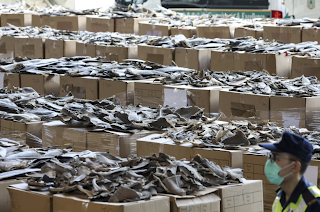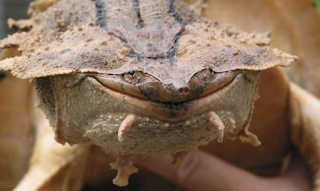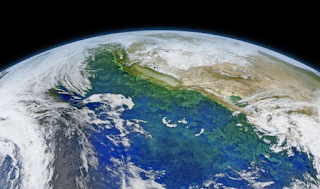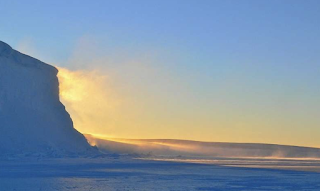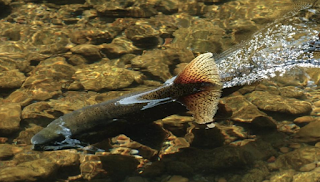Larges shark fin seizure in Hong Kong history, New technology could forecast ocean acidification levels, Popular opinion could kill Iceland’s commercial whaling, COVID-19 – plastic waste increase and much more…
Hong Kong has seized 26 tons of smuggled shark fins, sliced from some 38,500 endangered animals, in the largest bust of its kind in the southern Chinese city. The record haul was discovered in two containers from Ecuador and highlights the continued demand for shark fin, which is served at wedding banquets in many Chinese communities. The city’s customs department unveiled the haul on Wednesday and said it smashed previous records. “Each consignment consisting of 13 tons broke the previous record seizure of 3.8 tons of controlled shark fins made in 2019,” customs official Danny Cheung told reporters.
Read more in “South China Morning Post”
Together with an international team, Senckenberg scientist Uwe Fritz described a new species of mata mata turtle based on genetic analyses. Until now, it had been assumed that the genus Chelus only contained a single species. The new description also necessitates a reassessment of the conservation status of these species, which are frequently sold in the illegal animal trade. The study was recently published in the scientific journal Molecular Phylogenetics and Evolution.
University of Colorado – Boulder researchers have developed a method that could enable scientists to accurately forecast ocean acidity up to five years in advance. This would enable fisheries and communities that depend on seafood negatively affected by ocean acidification to adapt to changing conditions in real-time, improving economic and food security in the next few decades. Previous studies have shown the ability to predict ocean acidity a few months out, but this is the first study to prove it is possible to predict variability in ocean acidity multiple years in advance. The new method, described in Nature Communications, offers the potential to forecast the acceleration or slowdown of ocean acidification.
Read more in “University of Colorado – Boulder”
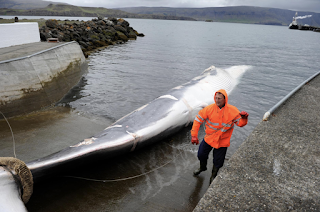 As public opinion changes and consumption of whale meat declines, commercial whaling may be one step closer to a permanent end in Iceland and possibly the world. For the second year in a row, Iceland, one of three remaining whaling nations, will not hunt any whales. Iceland already harvested the lowest number of whales among the whaling holdouts, which include Japan and Norway. Since resuming whaling in 2003 after a 14-year pause, the island nation has killed 1,505 whales. Recent announcements by the country’s two whaling companies suggest that the annual hunt may be coming to an end.
As public opinion changes and consumption of whale meat declines, commercial whaling may be one step closer to a permanent end in Iceland and possibly the world. For the second year in a row, Iceland, one of three remaining whaling nations, will not hunt any whales. Iceland already harvested the lowest number of whales among the whaling holdouts, which include Japan and Norway. Since resuming whaling in 2003 after a 14-year pause, the island nation has killed 1,505 whales. Recent announcements by the country’s two whaling companies suggest that the annual hunt may be coming to an end.
5. Coronavirus is causing spike of plastic waste. Conservationists fear it may be permanent
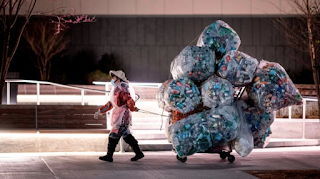 Surgical masks, gloves, protective equipment, body bags — the Covid-19 crisis has spurred a rapid expansion in the production of desperately-needed plastic products, with governments racing to boost their stockpiles and regular citizens clamoring for their share of supplies. Such production is necessary. But all that plastic ends up somewhere — and environmental campaigners fear it is just the tip of a looming iceberg, with the pandemic causing a number of serious challenges to their efforts to reduce plastic pollution.
Surgical masks, gloves, protective equipment, body bags — the Covid-19 crisis has spurred a rapid expansion in the production of desperately-needed plastic products, with governments racing to boost their stockpiles and regular citizens clamoring for their share of supplies. Such production is necessary. But all that plastic ends up somewhere — and environmental campaigners fear it is just the tip of a looming iceberg, with the pandemic causing a number of serious challenges to their efforts to reduce plastic pollution.
Read more in “CNN”
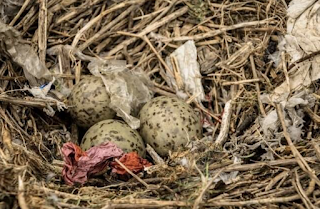 Researchers have found that plastic debris is incorporated in up to 80% of seabird nests. For the first time, it has now been identified where that plastic might come from—at least for some of the species studied. Surveys carried out in 2018 on an uninhabited island off the west coast of Scotland found that more than a quarter of all nests contained plastic, while the presence of plastic debris in nests of European shags (Phalacrocorax aristotelis) was as high as 80%.
Researchers have found that plastic debris is incorporated in up to 80% of seabird nests. For the first time, it has now been identified where that plastic might come from—at least for some of the species studied. Surveys carried out in 2018 on an uninhabited island off the west coast of Scotland found that more than a quarter of all nests contained plastic, while the presence of plastic debris in nests of European shags (Phalacrocorax aristotelis) was as high as 80%.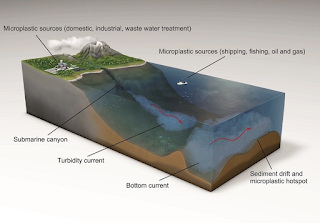 An international research project has revealed the highest levels of microplastic ever recorded on the seafloor, with up to 1.9 million pieces in a thin layer covering just 1 square meter. Over 10 million tons of plastic waste enters the oceans each year. Floating plastic waste at sea has caught the public’s interest thanks to the ‘Blue Planet Effect’ seeing moves to discourage the use of plastic drinking straws and carrier bags. Yet such accumulations account for less than 1% of the plastic that enters the world’s oceans.
An international research project has revealed the highest levels of microplastic ever recorded on the seafloor, with up to 1.9 million pieces in a thin layer covering just 1 square meter. Over 10 million tons of plastic waste enters the oceans each year. Floating plastic waste at sea has caught the public’s interest thanks to the ‘Blue Planet Effect’ seeing moves to discourage the use of plastic drinking straws and carrier bags. Yet such accumulations account for less than 1% of the plastic that enters the world’s oceans.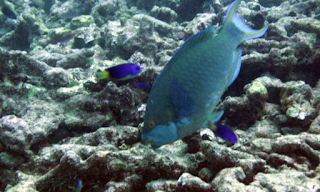 Climate change and warming seas are transforming tropical coral reefs and undoing decades of knowledge about how to protect these delicate and vital ecosystems. Many of the world’s coral reefs are seeing biodiversity plunge in the face of repeated coral bleaching events. Protected areas, called marine reserves, are an effective and long-established tool in the conservation toolbox. Marine reserves have been used for decades to enhance biodiversity and fish biomass by preventing damage and over-exploitation by fishing.
Climate change and warming seas are transforming tropical coral reefs and undoing decades of knowledge about how to protect these delicate and vital ecosystems. Many of the world’s coral reefs are seeing biodiversity plunge in the face of repeated coral bleaching events. Protected areas, called marine reserves, are an effective and long-established tool in the conservation toolbox. Marine reserves have been used for decades to enhance biodiversity and fish biomass by preventing damage and over-exploitation by fishing.
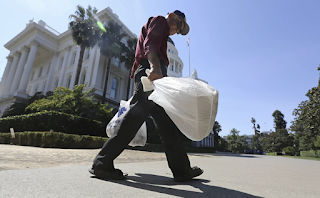 Retailers in California can once again hand out free single-use plastic bags under an executive order announced on Thursday by Gov. Gavin Newsom, the latest turn away from reusable bags amid the coronavirus outbreak. The order permits stores to provide customers with disposable plastic bags for the next 60 days. “It is critical to protect the public health and safety and minimize the risk of Covid-19 exposure for workers engaged in essential activities, such as those handling reusable grocery bags,” it states.
Retailers in California can once again hand out free single-use plastic bags under an executive order announced on Thursday by Gov. Gavin Newsom, the latest turn away from reusable bags amid the coronavirus outbreak. The order permits stores to provide customers with disposable plastic bags for the next 60 days. “It is critical to protect the public health and safety and minimize the risk of Covid-19 exposure for workers engaged in essential activities, such as those handling reusable grocery bags,” it states.
A team of researchers from the University of Tasmania has found evidence of microplastics in ice cores collected off the coast of Antarctica. In their paper published in the journal Marine Pollution Bulletin, the group describes their study of the cores and the plastics they found. Last year, a team of researchers found examples of microplastics in Arctic ice floes, further evidence of the spread of the pollutants in the world’s oceans. In this new effort, the team in Tasmania has found evidence of microplastics in ice cores collected in Antarctica ten years ago.
and
Original study in “Marine Pollution Bulletin”
 Using the most advanced Earth-observing laser instrument NASA has ever flown in space, scientists have made precise, detailed measurements of how the elevation of the Greenland and Antarctic ice sheets have changed over 16 years. The results provide insights into how the polar ice sheets are changing, demonstrating definitively that small gains of ice in East Antarctica are dwarfed by massive losses in West Antarctica. The scientists found the net loss of ice from Antarctica, along with Greenland’s shrinking ice sheet, has been responsible for 0.55 inches (14 millimeters) of sea-level rise between 2003 and 2019 — slightly less than a third of the total amount of sea-level rise observed in the world’s oceans.
Using the most advanced Earth-observing laser instrument NASA has ever flown in space, scientists have made precise, detailed measurements of how the elevation of the Greenland and Antarctic ice sheets have changed over 16 years. The results provide insights into how the polar ice sheets are changing, demonstrating definitively that small gains of ice in East Antarctica are dwarfed by massive losses in West Antarctica. The scientists found the net loss of ice from Antarctica, along with Greenland’s shrinking ice sheet, has been responsible for 0.55 inches (14 millimeters) of sea-level rise between 2003 and 2019 — slightly less than a third of the total amount of sea-level rise observed in the world’s oceans.
12. Dissolved oxygen and pH policy leave fisheries at risk
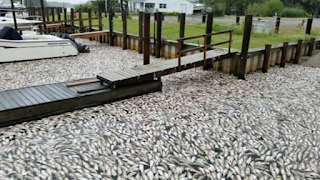 In a Policy Forum, “Dissolved oxygen and pH criteria leave fisheries at risk” published in the April 24 issue of the journal Science, Stony Brook University’s Dr. Christopher J. Gobler, Endowed Chair of Coastal Ecology and Conservation, and Stephen J. Tomasetti, Science Teaching and Research to Inform Decisions (STRIDE) fellow, consider accumulating scientific evidence on the harmful effects of coastal hypoxia (low oxygen) and acidification (decreasing pH, increasing acidity) in coastal ecosystems and suggest approaches that would address current policy shortfalls and facilitate improved protection of aquatic life.
In a Policy Forum, “Dissolved oxygen and pH criteria leave fisheries at risk” published in the April 24 issue of the journal Science, Stony Brook University’s Dr. Christopher J. Gobler, Endowed Chair of Coastal Ecology and Conservation, and Stephen J. Tomasetti, Science Teaching and Research to Inform Decisions (STRIDE) fellow, consider accumulating scientific evidence on the harmful effects of coastal hypoxia (low oxygen) and acidification (decreasing pH, increasing acidity) in coastal ecosystems and suggest approaches that would address current policy shortfalls and facilitate improved protection of aquatic life.
14. North Atlantic right whales in poorer condition than Southern counterparts
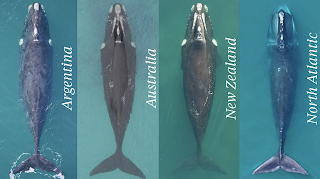 Endangered North Atlantic right whales are in much poorer body condition than their counterparts in the southern hemisphere, according to a new study by Woods Hole Oceanographic Institution (WHOI) scientists and their colleagues. The team used drones and aerial photogrammetry to measure the body length and width of individual right whales in four regions around the world. They then compared the body condition of individual North Atlantic right whales with individuals from three increasing populations of Southern right whales in Argentina, Australia and New Zealand waters.
Endangered North Atlantic right whales are in much poorer body condition than their counterparts in the southern hemisphere, according to a new study by Woods Hole Oceanographic Institution (WHOI) scientists and their colleagues. The team used drones and aerial photogrammetry to measure the body length and width of individual right whales in four regions around the world. They then compared the body condition of individual North Atlantic right whales with individuals from three increasing populations of Southern right whales in Argentina, Australia and New Zealand waters.
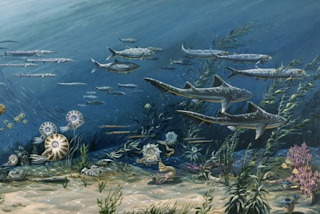 A new way of looking at marine evolution over the past 540 million years has shown that levels of biodiversity in our oceans have remained fairly constant, rather than increasing continuously over the last 200 million years, as scientists previously thought. A team led by researchers from the School of Geography, Earth and Environmental Sciences at the University of Birmingham have used a big data approach to study this question, which has been disputed by palaeobiologists in recent years.
A new way of looking at marine evolution over the past 540 million years has shown that levels of biodiversity in our oceans have remained fairly constant, rather than increasing continuously over the last 200 million years, as scientists previously thought. A team led by researchers from the School of Geography, Earth and Environmental Sciences at the University of Birmingham have used a big data approach to study this question, which has been disputed by palaeobiologists in recent years.
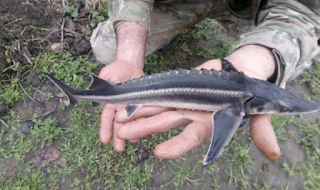 Within the space of less than a month, two specimens of a vanishingly rare fish have been plucked from the waters of the Rioni River in Georgia. Before these two juveniles were caught, conservationists had expressed fears that the critically endangered ship sturgeon might have already gone extinct. This extraordinary, other-worldly fish—whose evolution dates back hundreds of millions of years—had not been seen alive in the wild for many years.
Within the space of less than a month, two specimens of a vanishingly rare fish have been plucked from the waters of the Rioni River in Georgia. Before these two juveniles were caught, conservationists had expressed fears that the critically endangered ship sturgeon might have already gone extinct. This extraordinary, other-worldly fish—whose evolution dates back hundreds of millions of years—had not been seen alive in the wild for many years.
The UK’s vast marine territories are monitored by the Royal Navy using high tech sonar equipment. Sonar systems emit and receive acoustic signals which can be analyzed to detect underwater objects and map our subsea environments. The Defence and Security Accelerator 1 (DASA), a part of the Ministry of Defence (MoD), contracted the IMI and Systems Engineering & Assessment Ltd. (SEA) to develop an AI algorithm capable of automatically classifying underwater environments directly from sonar measurements.
Researchers at Oregon State University’s College of Agricultural Sciences have taken a step closer to solving one of nature’s most remarkable mysteries: How do salmon, when it’s time to spawn, find their way back from distant ocean locations to the stream where they hatched? A new study into the life cycle of salmon, involving magnetic pulses, reinforces one hypothesis: The fish use microscopic crystals of magnetite in their tissue as both a map and compass and navigate via the Earth’s magnetic field.
———————————————–

